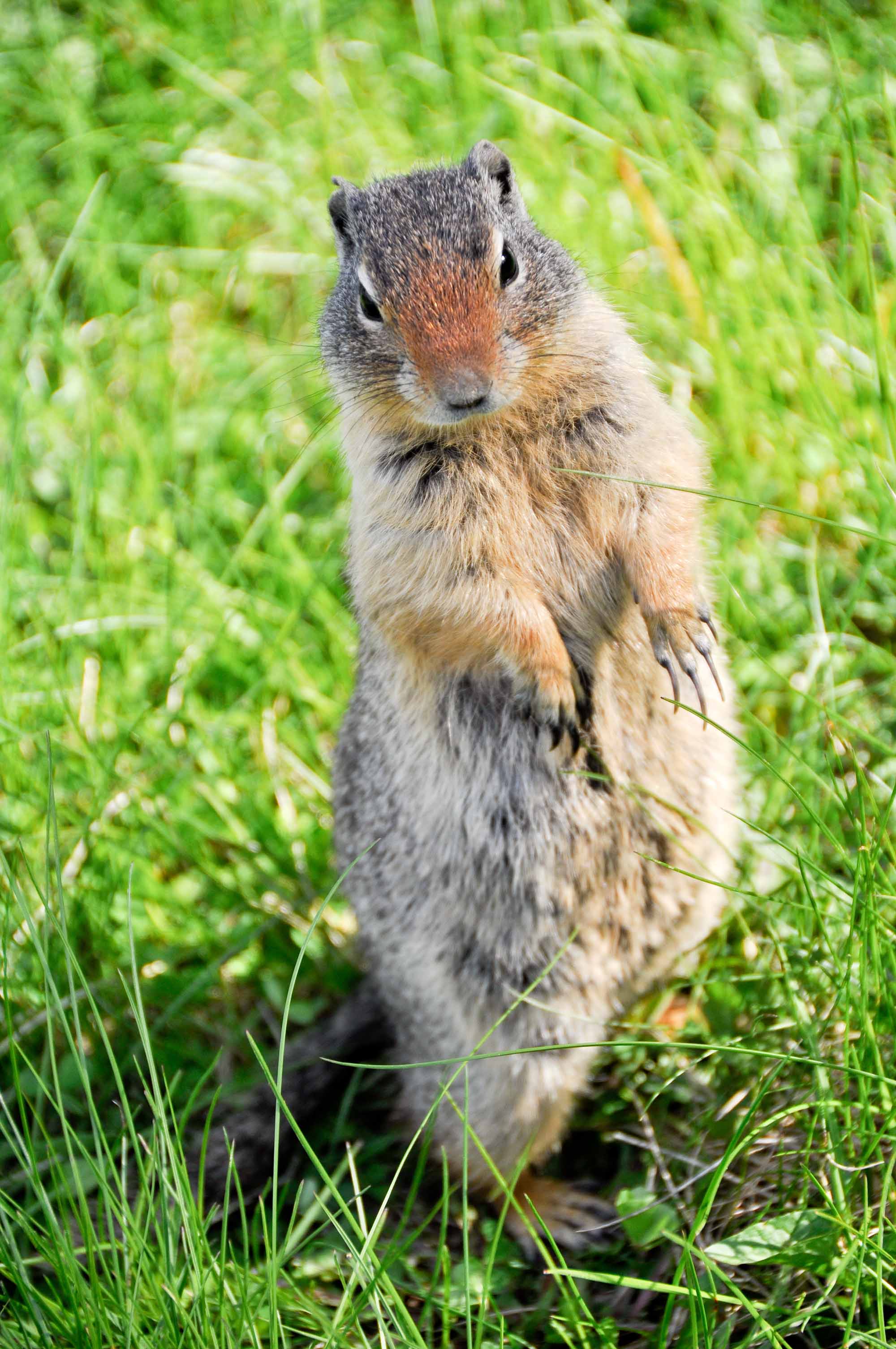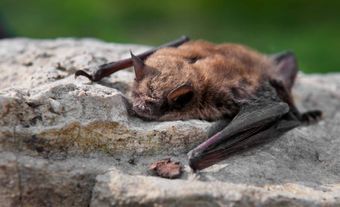The prairie dog is a highly gregarious, diurnal, terrestrial ground SQUIRREL that lives in colonies or "towns." It is very vocal and one call, a bark, prompted its generic name Cynomys [Latin, "dog mouse"] and its common name. Prairie dogs have receded in distribution as a result of deliberate exterminations because, although they aid SOIL by their excavations, they compete with domestic livestock for green PLANTS. Of 4 species, only the black-tailed prairie dog (Cynomys ludovicianus) extends into Canada (near Val Marie, Sask).
Description
Prairie dogs are pinkish-brown above, whitish below, with short ears and short, black-tipped tail. Adults weigh 1-1.5 kg. Prairie dogs remain close to elevated bare mounds that surround the mouths of their burrows, using them for vantage points.
One litter (4-5 young) is born each spring in a nesting chamber 4-5 m below the ground surface. Deep chambers are also used during extreme winter conditions. Prairie dogs do not hibernate in the southern part of their range, but whether or not they hibernate in Canada is unknown. They use body fat accumulated in autumn when food is scarce.

 Share on Facebook
Share on Facebook Share on X
Share on X Share by Email
Share by Email Share on Google Classroom
Share on Google Classroom







